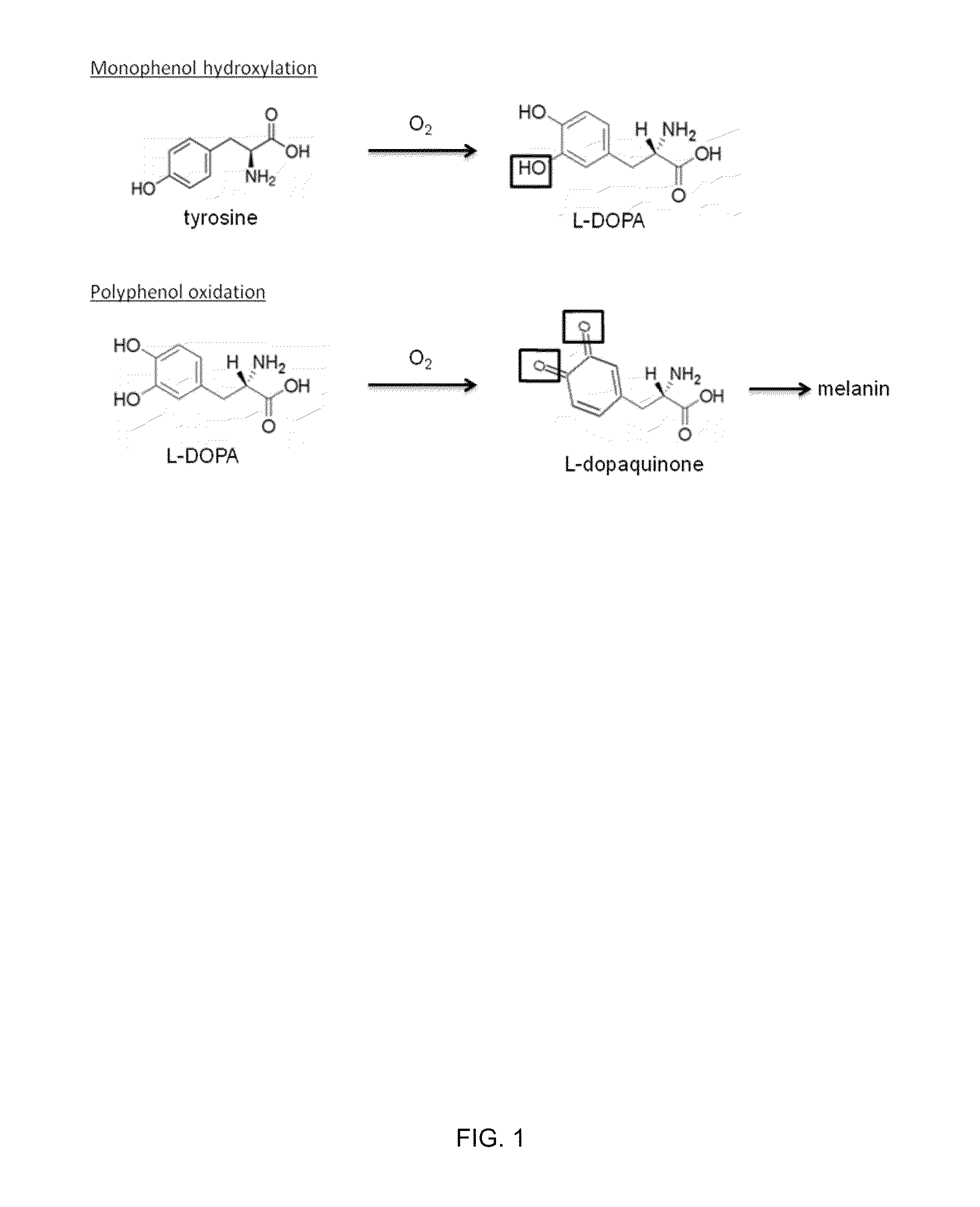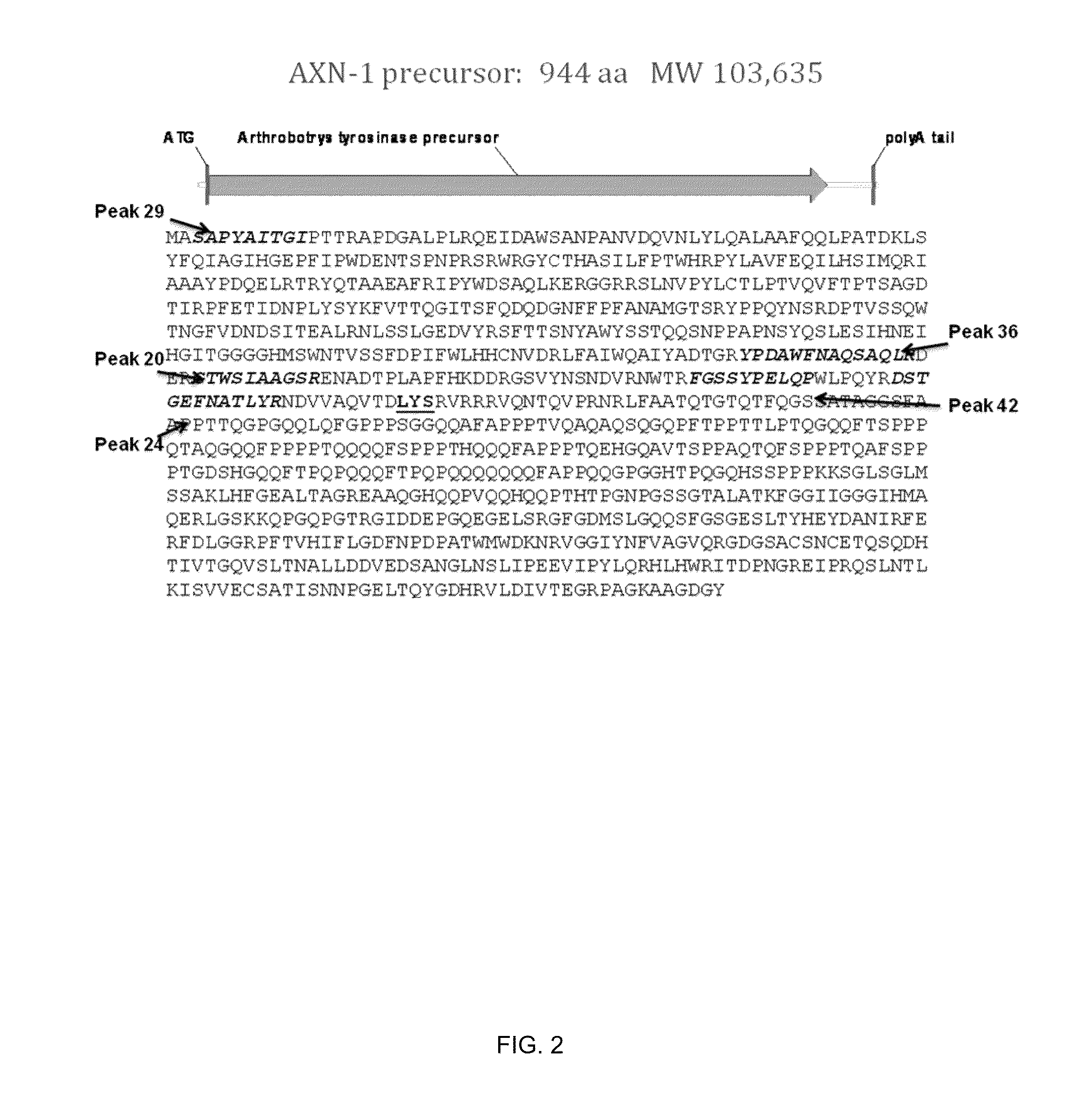Genes encoding nematode toxins
a technology of nematode toxins and genes, applied in the field of molecular biology, can solve the problems of poor bioavailability of chemicals, affecting the bioavailability of chemicals, and affecting the effect of nematicidal agents on root pathogens
- Summary
- Abstract
- Description
- Claims
- Application Information
AI Technical Summary
Benefits of technology
Problems solved by technology
Method used
Image
Examples
example 1
Assay for Nematicidal Activity
[0129]Use of biogenic amines to induce feeding and / or movement from parasitic nematodes has been demonstrated previously for RNAi uptake experiments (for example, see P. E. Urwin, Catherine J. Lilley, and Howard J. Atkinson, “Ingestion of Double-Stranded RNA by Preparasitic Juvenile Cyst Nematodes Leads to RNA Interference” Molecular Plant Microbe Interaction Vol. 15, No. 8, 2002, pp. 747-752. Also see M J Kimber, S McKinney, S. McMaster T A Day, C C Flemming and A G Maule (2007) “Flp gene disruption in a parasitic nematode reveals motor dysfunction and unusual neuronal sensitivity to RNA interference” The FASEB Journal vol 21 pp 1233-1242)
[0130]Assays of SCN activity provided herein are based on use of an SCN bioassay that typically contains ˜200 J2 nematodes (hatched within 2 days of assay) per well in a 96-well half-area plate. The nematodes are incubated in 20 mM Tris buffer (pH 8.0) containing 50 mM octopamine, and the following antibiotic and anti...
example 2
Enhancement of Steady-State Levels of Nematode Protein Toxins in Microbial Strains
[0131]A microbial strain of interest (e.g., a bacteria or fungal strain) is grown under media conditions that can partially limit the availability of nutrients to the microbe. For instance, the availability of carbon or nitrogen can be reduced in the minimal growth medium.
[0132]The medium is supplemented with components that are useful to stimulate microbial production of nematode toxins. As one example, the addition of gelatin to a growth medium can mimic the gelatinous cuticle found on some nematodes, and thus stimulate the microbial production of nematode protein toxins. As another example, the addition of nematodes to the growth medium (such as C. elegans or soybean cyst nematode) can stimulate the microbial production of protein toxins. As another example, a nematode extract can be prepared and added to a microbial growth medium to stimulate the production of microbial protein toxins. The various ...
example 3
Identification of Nematode Protein Toxin from Arthrobotrys oligospora
[0134]It is known in the art that nematicidal fungi can be isolated from soil, in particular from suppressive soils. Several such fungi were obtained and tested for SCN activity, under a variety of growth conditions.
[0135]Arthrobotrys oligospora is a nematophagous fungus, and has been observed previously to have nematicidal activity in soil. This activity has been associated with nematophagous trapping in the literature (for example, see Nansen et al., 1988. Vet Parasitol., 26:329-37). There is no description of nematode protein toxins production by Arthrobotrys oligospora or related strains.
[0136]To test the ability of an Arthrobotrys oligospora strain to produce protein toxins, an Arthrobotrys oligospora strain (ATX21995) was inoculated into Arthrobotrys medium supplemented as shown below, and incubated at 30° C. with gentle shaking for 7 days. The resulting extracts were tested for ability to kill SCN.[0137]Art...
PUM
| Property | Measurement | Unit |
|---|---|---|
| pH | aaaaa | aaaaa |
| temperature | aaaaa | aaaaa |
| temperature | aaaaa | aaaaa |
Abstract
Description
Claims
Application Information
 Login to View More
Login to View More - R&D
- Intellectual Property
- Life Sciences
- Materials
- Tech Scout
- Unparalleled Data Quality
- Higher Quality Content
- 60% Fewer Hallucinations
Browse by: Latest US Patents, China's latest patents, Technical Efficacy Thesaurus, Application Domain, Technology Topic, Popular Technical Reports.
© 2025 PatSnap. All rights reserved.Legal|Privacy policy|Modern Slavery Act Transparency Statement|Sitemap|About US| Contact US: help@patsnap.com



